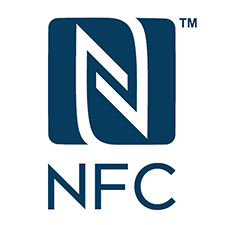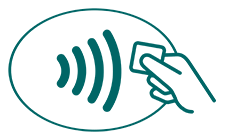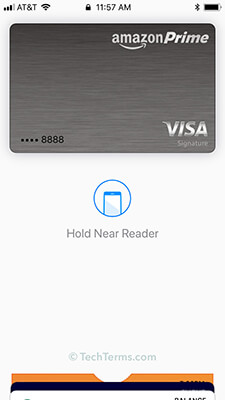NFC
Stands for "Near Field Communication." NFC is a short-range wireless technology that enables simple and secure communication between electronic devices. It may be used on its own or in combination with other wireless technologies, such as Bluetooth.
The communication range of NFC is roughly 10 centimeters. However, an antenna may be used to extended the range up to 20 centimeters. This short range is intentional, as it provides security by only allowing devices to communicate within close proximity of each other. This makes NFC ideal for secure transactions, such as contactless payments at a checkout counter.
There are many other uses for NFC as well. Examples include:
- Paying a fare on public transit, such as a bus or train
- Confirming your ticket at a concert or sports event
- Syncing workout data from a fitness machine with your device
- Viewing special offers on your phone when you enter a store
- Loading information about an artist or piece of art at a museum
- Viewing a map and related information at a national park
- Loading a translated menu at a restaurant
- Checking in and checking out at a hotel
- Unlocking an NFC-enabled door lock
NFC is often seen as an alternative to QR codes, which require scanning a square code with your device. Both technologies are designed for short-range transactions, but QR code scanning requires a camera, while NFC communication requires a near-field communication chip. NFC communication is arguably simpler since you don't need to manually scan anything with your device. Additionally, NFC provides two-way communication, while scanning a QR code is a one-way transaction.
NOTE: Since the range of NFC is limited to only a few centimeters, it is ideal for quick data transfers and transactions. For communication that requires a longer time or longer distance, NFC Connection Handover technology may be used to transition the connection to Bluetooth.
 Test Your Knowledge
Test Your Knowledge

